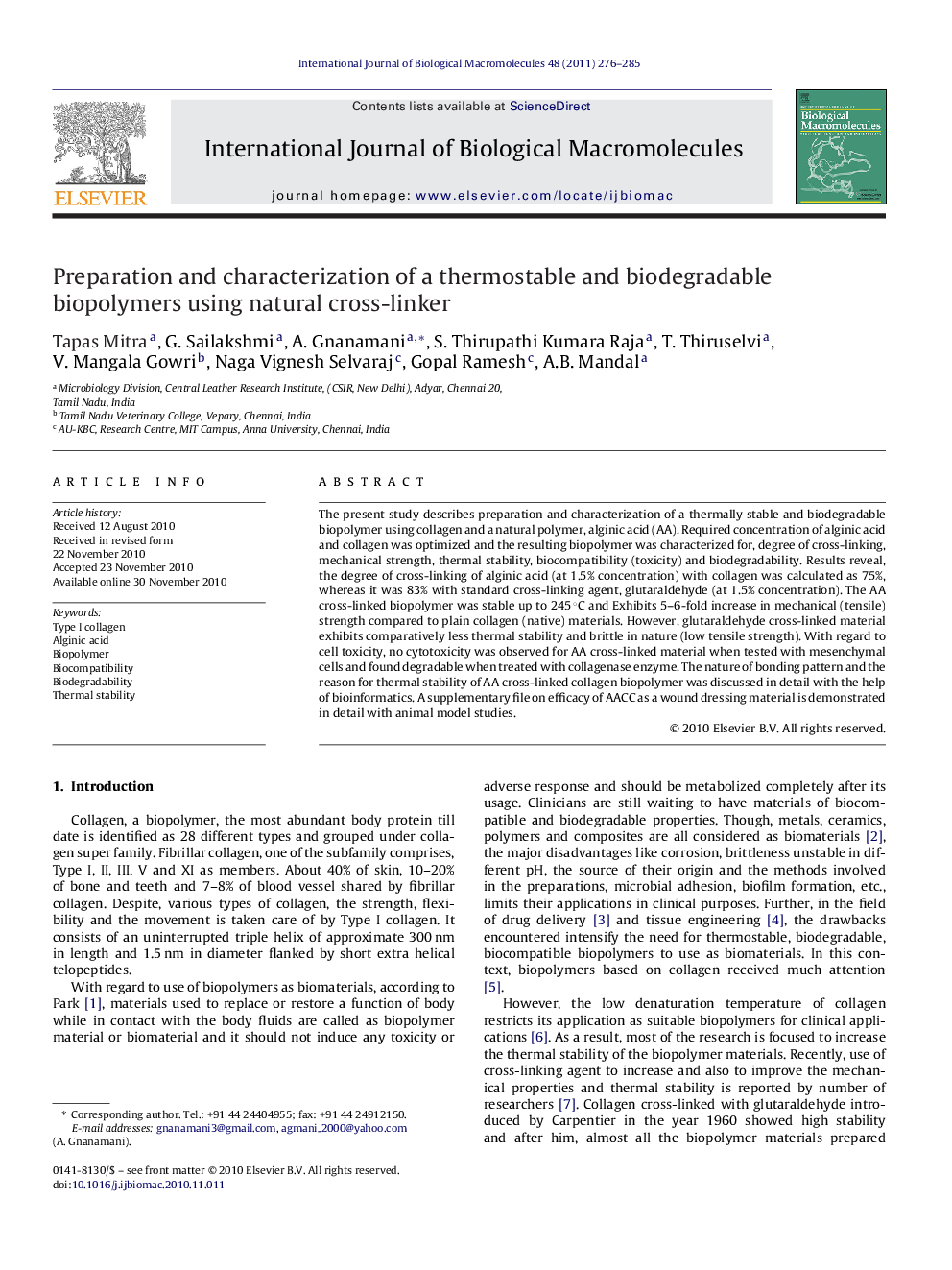| Article ID | Journal | Published Year | Pages | File Type |
|---|---|---|---|---|
| 1987364 | International Journal of Biological Macromolecules | 2011 | 10 Pages |
The present study describes preparation and characterization of a thermally stable and biodegradable biopolymer using collagen and a natural polymer, alginic acid (AA). Required concentration of alginic acid and collagen was optimized and the resulting biopolymer was characterized for, degree of cross-linking, mechanical strength, thermal stability, biocompatibility (toxicity) and biodegradability. Results reveal, the degree of cross-linking of alginic acid (at 1.5% concentration) with collagen was calculated as 75%, whereas it was 83% with standard cross-linking agent, glutaraldehyde (at 1.5% concentration). The AA cross-linked biopolymer was stable up to 245 °C and Exhibits 5–6-fold increase in mechanical (tensile) strength compared to plain collagen (native) materials. However, glutaraldehyde cross-linked material exhibits comparatively less thermal stability and brittle in nature (low tensile strength). With regard to cell toxicity, no cytotoxicity was observed for AA cross-linked material when tested with mesenchymal cells and found degradable when treated with collagenase enzyme. The nature of bonding pattern and the reason for thermal stability of AA cross-linked collagen biopolymer was discussed in detail with the help of bioinformatics. A supplementary file on efficacy of AACC as a wound dressing material is demonstrated in detail with animal model studies.
